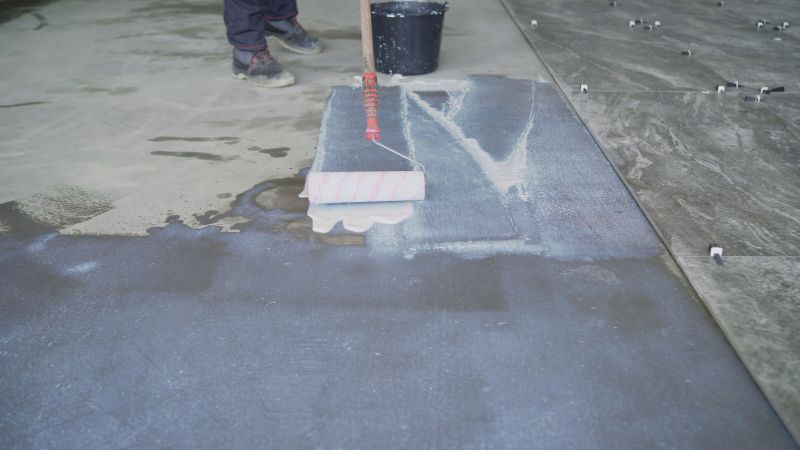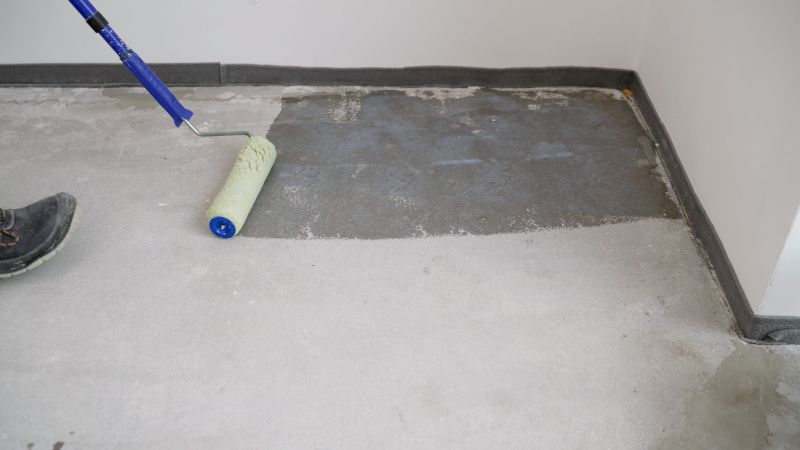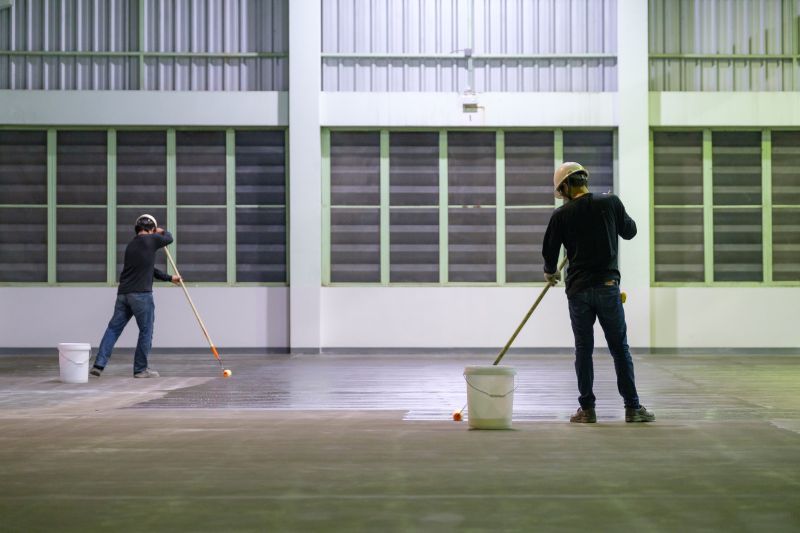Optimal Timing for Concrete Floor Sealings
Determining the optimal time for concrete floor sealings depends on environmental conditions and the curing process of the concrete. Proper timing ensures maximum adhesion and durability of the sealant, extending the lifespan of the flooring. Typically, sealings are most effective when applied after the concrete has fully cured and moisture levels are low.
Sealings should be applied during dry weather with moderate temperatures to prevent moisture interference and ensure proper curing.
Waiting until the concrete has fully cured, usually 28 days, allows for optimal adhesion of the sealant.
Spring and fall often provide the best conditions, avoiding extreme cold or heat that can affect sealant performance.
Testing moisture content before sealing is crucial; moisture levels should be below 4% for effective sealing.

Ways to make Concrete Floor Sealings work in tight or awkward layouts.

Popular materials for Concrete Floor Sealings and why they hold up over time.

Simple add-ons that improve Concrete Floor Sealings without blowing the budget.

High-end options that actually feel worth it for Concrete Floor Sealings.

Finishes and colors that play nicely with Concrete Floor Sealings.

Little measurements that prevent headaches on Concrete Floor Sealings day.
Concrete floor sealings serve as a protective barrier, preventing damage from stains, moisture, and wear. They enhance the appearance of the surface by providing a glossy or matte finish and can significantly extend the life of the concrete. Sealants are available in various formulations, including penetrating, acrylic, epoxy, and polyurethane types, each suited to different usage environments and performance needs.

A 60-second routine that keeps Concrete Floor Sealings looking new.

A frequent mistake in Concrete Floor Sealings and how to dodge it.

Small tweaks to make Concrete Floor Sealings safer and easier to use.

Lower-waste or water-saving choices for Concrete Floor Sealings.
| Aspect | Details |
|---|---|
| Optimal Application Temperature | Between 50°F and 85°F for best results |
| Dry Weather | Sealants should be applied during dry conditions to prevent moisture entrapment |
| Concrete Curing Period | Minimum of 28 days before sealing |
| Surface Preparation | Cleaning and repairing cracks improve adhesion |
| Moisture Content | Below 4% moisture for effective sealing |
| Seasonal Timing | Spring and fall are preferred seasons |
| Temperature Fluctuations | Avoid during extreme cold or heat |
| Time After Pouring | Seal after concrete has fully cured and moisture levels are low |
Applying concrete floor sealings at the appropriate time ensures maximum effectiveness and longevity. Proper timing, combined with surface preparation and suitable weather conditions, results in a durable and visually appealing finish. Regular maintenance and reapplication are recommended to preserve the protective qualities of the sealant.
Interested in enhancing the durability and appearance of concrete floors? Filling out the contact form can provide more information and assistance with scheduling sealings at the optimal time for specific project needs.
